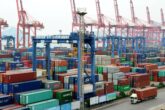June 27, 2022
Building a Silicon Bulwark: How the United States and Taiwan Can Retain Joint Leadership of the Global Semiconductor Industry
In March of this year, the Taiwan Ministry of Justice’s Investigation Bureau (法務部調查局) launched probes into more than 100 companies suspected of trying to woo the island’s semiconductor engineers to work for mainland Chinese companies. Two months later, it raided the offices of 10 more semiconductor companies and summoned their owners for questioning about talent poaching.
China’s efforts to sabotage Taiwan’s chipmaking industry are not new. In 2019, for example, Taiwan’s Business Weekly reported that more than 3,000 semiconductor engineers had already departed the island for positions at mainland companies, amounting to nearly one-tenth of the roughly 30,000 Taiwanese engineers involved in semiconductor research and development (R&D). Although Chinese firms face significant barriers in various segments of the semiconductor industry, they have succeeded in amassing a wealth of intrinsic knowledge by luring not only top Taiwanese executives, but also “entire production teams on the ground.”
Given its prominent position in so many global supply chains, threats to Taiwan’s semiconductor industry are a source of international concern.
Given its prominent position in so many global supply chains, threats to Taiwan’s semiconductor industry are a source of international concern. This article argues that, despite their competing interests in some segments of the chip market, the US and Taiwanese governments share an interest in strengthening mechanisms for mutual legal assistance, harmonizing approaches to export control, and pooling investments in semiconductor fabrication.
Read the full article from The Global Taiwan Institute.
More from CNAS
-
Tariffs and Tech: An Uncertain Recipe
Higher tariffs could prompt American cloud companies to shift more of their capital investments abroad....
By Pablo Chavez
-
Lessons in Learning
Executive Summary Although claims of a revolution in military affairs may be overhyped, the potential for artificial intelligence (AI) and autonomy to change warfare is growin...
By Josh Wallin
-
Human, Machine, War: How the Mind-Tech Nexus Will Win Future Wars
Air University Press has published Strategic Multilayer Assessment’s (SMA) latest book, Human, Machine, War: How the Mind-Tech Nexus Will Win Future Wars. Forewords by General...
By Samuel Bendett & Lt. Gen. Jack Shanahan
-
Five Objectives to Guide U.S. AI Diffusion
The Framework for AI Diffusion (the Framework) is an ambitious proposal to shape the global distribution of critical AI capabilities, maintain U.S. AI leadership, and prevent ...
By Janet Egan & Spencer Michaels



